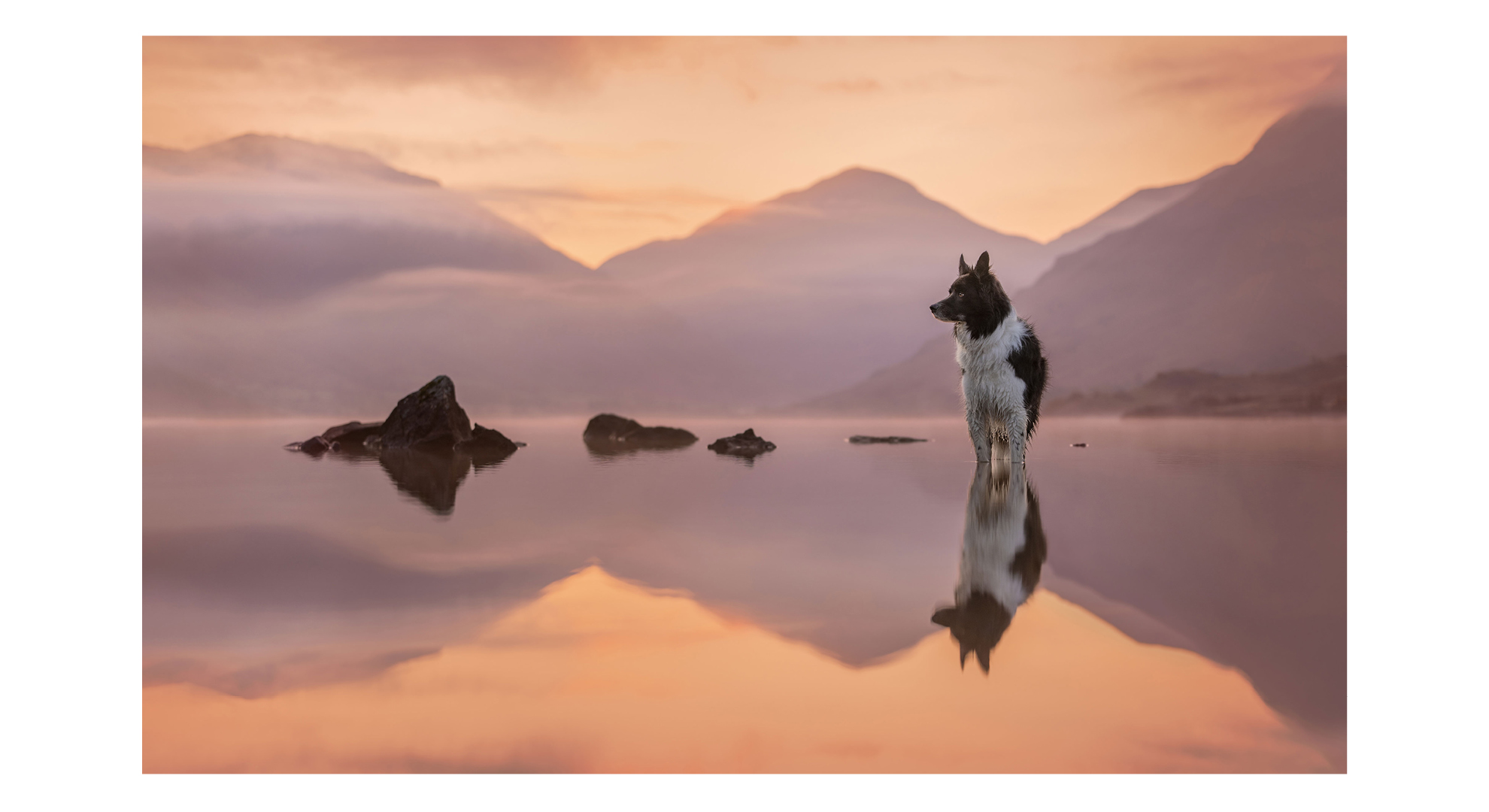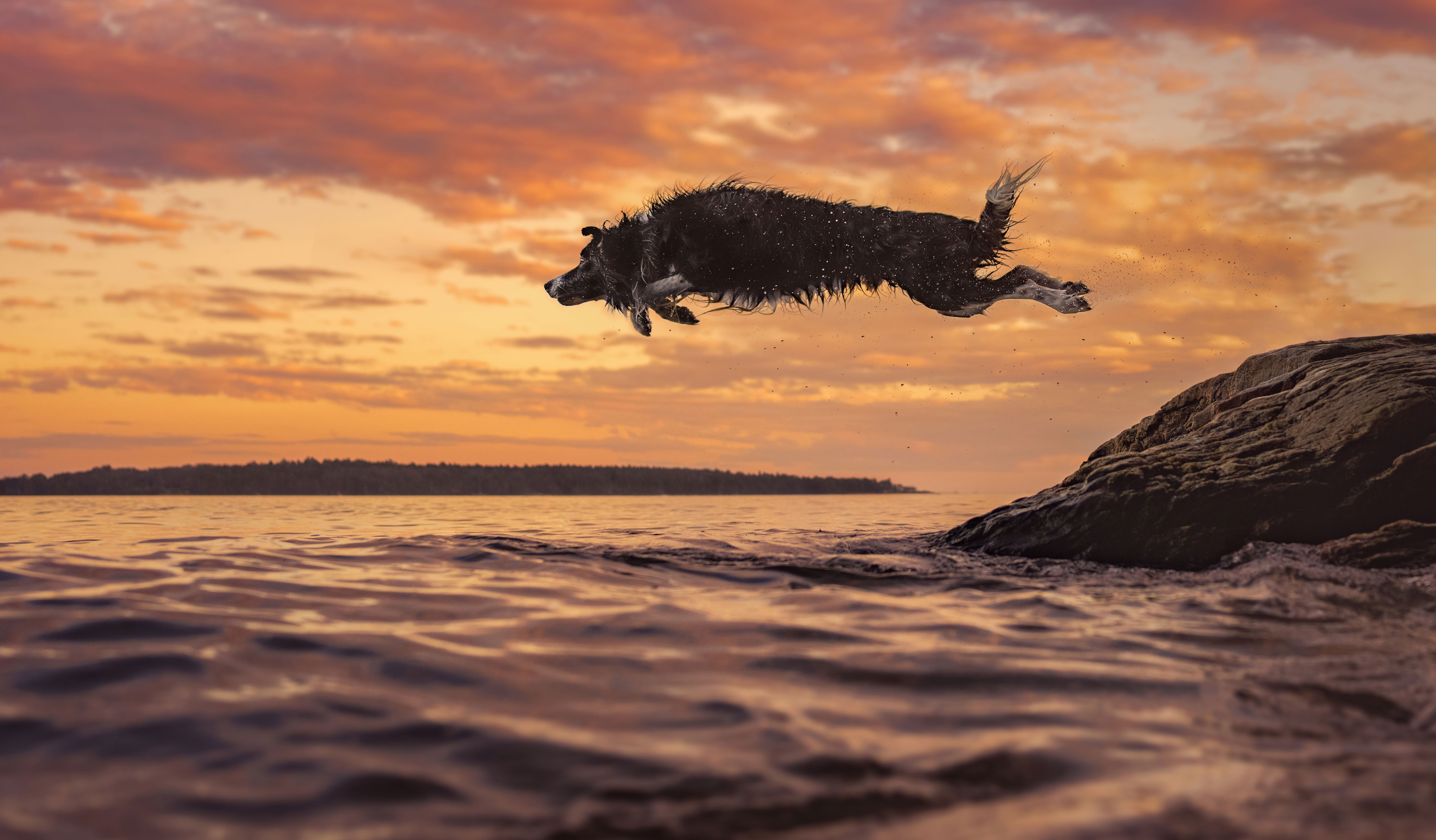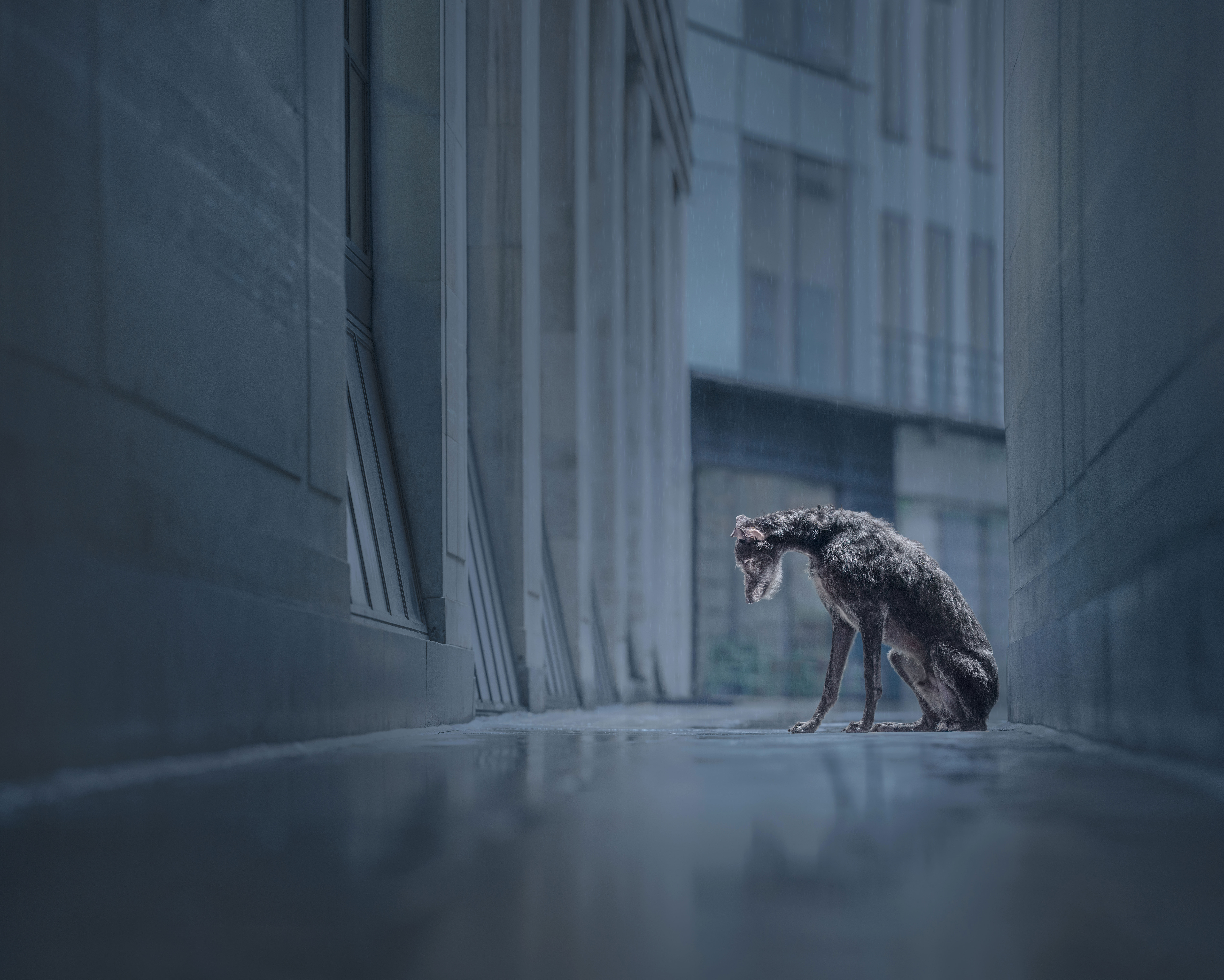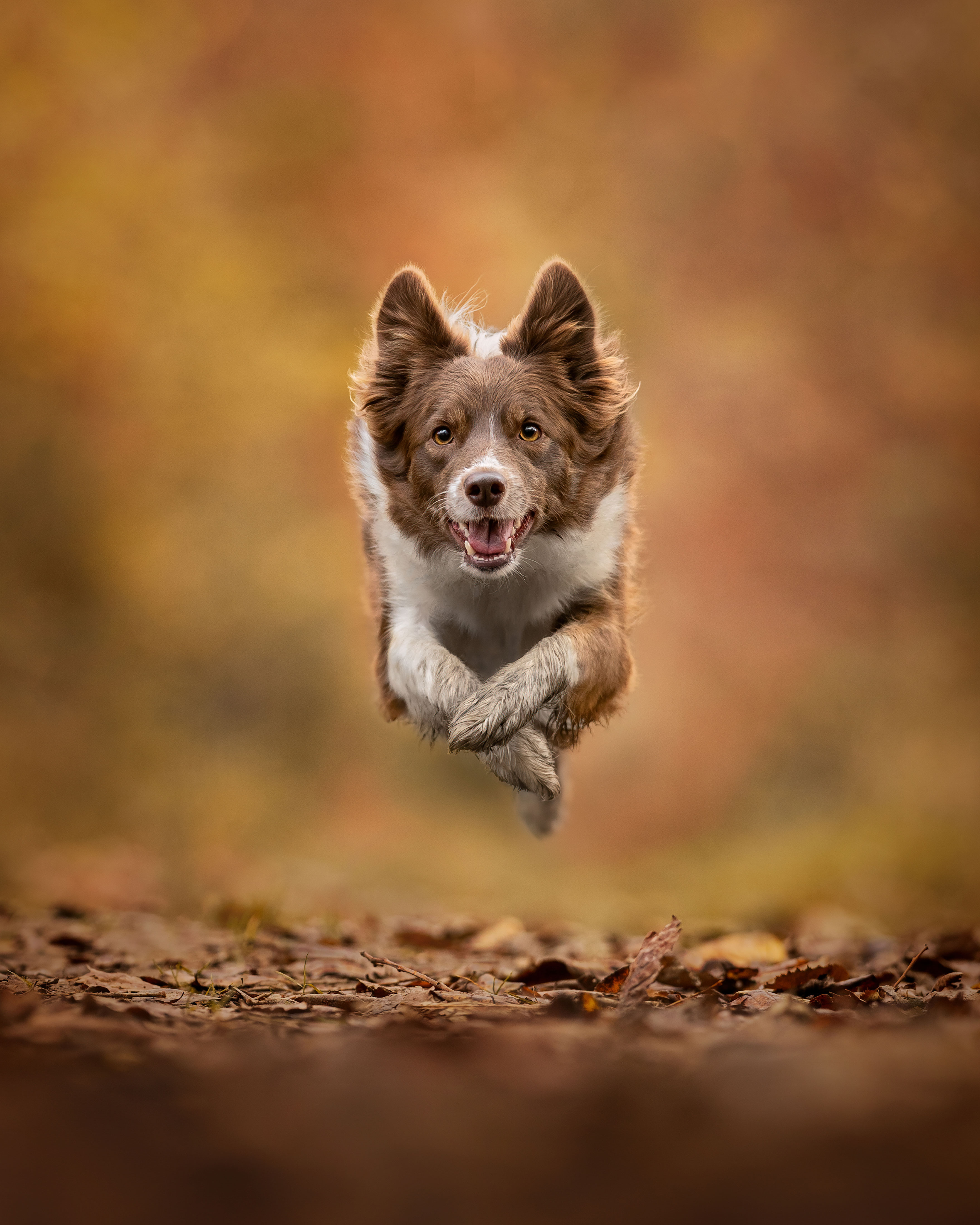
Recently crowned the overall winner of the 2024 Societies of Photographers 20 x 16 Print Competition, and having won a hatful of previous awards, Jess McGovern is a leading practitioner of dog photography.
Her beautifully composed images reveal the soul of her subjects and capture the deep emotional affinity that humans have with canines.
Self-taught, McGovern is passionate about giving back and has helped 500,000 photographers develop and grow, both in-person and via her online photographic community.
She is giving two talks at The Photography & Video Show: ‘Lights, camera, lick!’, on March 16 and ‘Catch! Creating classic dog action shots’ on March 18.
We caught up with McGovern to find out more about her and her photography.
• Standard entry tickets to The Photography & Video Show 2024 start from £14.95 and are valid for any one day of the event. Click here to buy your tickets

Why did you become a pets photographer?
Animals were always my safe space when I was a teen, and I was given a camera as a Christmas present so the two sort of fell together. It was an Olympus E-420, an entry-level DSLR, with a kit lens. I like to know how things work and why things work, so enjoyed using it.
When I needed some help, a couple of people on the internet gave me some feedback: "If you try doing this, you might find it easier." It was helpful advice, so that’s why I offer free online tutorials now.
‘Never work with children and animals’, as the old saying goes, but you’re proving otherwise. What’s the secret of your success?
My hobbies are all to do with animals and animal sports so I spend all my time doing those. I’ve always enjoyed canine and equine behavior, understanding how they work, and I train dogs as well. I have four dogs at home, and all of them do a job in some way, shape or form.
For me, training a dog is fun – even just learning about dog behavior – and knowing how to communicate with your dog is very satisfying. It’s incredibly easy to photograph dogs; any dog can be trained and you can use the same techniques on children.

Which training techniques will always work?
The main thing is to pay the dog – a dog needs to be paid for any behavior. The biggest mistake that a lot of photographers make, and also when photographing their own dog, is that they expect the dog to hold a position for a long period of time.
But if you pay the dog really quickly for the first few seconds of behavior and then do it again, adding a couple more seconds, you’ll have at least 20 seconds to play with them the next time. So pay the dog quickly and you will get way more from them.
And what should you use to pay them?
Toys or treats, although the treats need to be high-value ones. We’re training our new puppy with cooked chicken instead of the kibble [dry food] that you would normally give them. If you reward a dog with something that’s high in value, then a dog will do anything.

How do you approach working with a dog you’ve never met before?
The dog always comes to me – I’ve worked with thousands of rescue dogs and never approach any animal that I work with. I’ll often make eye contact and if that’s good then we can say hello. When we get into the shoot, I’m on the floor making weird noises. Everybody’s happy – the snacks are flying around, the dog will often run up and we can have a bit of a ‘hi’.
I heavily manage my shoots, mainly so that the dog stays happy all the way through. I let the dog sniff a little bit while I sort things out and I ask the owner to bring the dog to where I need its feet to go. Some people say that my work is posed. Every dog is in a particular position but the dog finds it for themselves – there’s never any manhandling them into a position.
I like my photos to look clean and safe so in the pre-session consultation with the owner, I will ask if there’s anything the dog is really scared of because if they’re scared of something I need to know what it is to make sure I don’t make that thing worse.
I also need to know one thing about the dog that the owner really likes and what the dog’s personality is like, because I’ll try to capture that. Then I’ll focus on the kind of artwork the owner wants for their home – for example, is it something that’s going to hang above a fireplace? But to start with I need to know the dog’s size, breed and age, its personality, its likes and dislikes and why the owner loves it.
That leads me to the location – I pick the location every time. I didn’t used to do that, but now I do. That way, I can make sure the owner gets what they expected from the shoot and that’s the important part.

Which camera setup do you use, and why?
I switched between Sony and Nikon in the past but I’m using Sony now. I used to have a Sony A99 and because the noise handling wasn’t enough for what I needed, I started using a Nikon DSLR instead. But as soon as I could, I went back to Sony and I have been shooting on Sony cameras ever since.
I currently use a Sony A1, which I treated myself to at The Photography Show in 2022. Before that, I had a Sony A9 II, and before that, two Sony A7R IIIs. The A9 II had a better autofocus system than the A7R III, so it was much faster for action with dogs but had a lower sensor resolution. I missed the large file sizes for producing massive pieces of wall art, so I knew the A1 was the best choice for me personally.
Which lenses and other kit can you not do without?
Definitely a Sony FE 70-200mm f/2.8 GM OSS II: it’s a versatile lens and is never really off my camera. The Sony FE 135mm f/1.8 GM is fabulous for action shots with dogs. For lighting, the Pixapro Citi600 Pro wireless strobe is my go-to light, mainly because of the super-short flash duration, the fact that there are no cables and the battery life is enough for what I need.

What has the technology of mirrorless cameras given you, over and above that of DSLRs?
Electronic viewfinders and Animal Eye AF – although it wasn’t actually that amazing when it first came out. For a long time with the A7R III, I was shooting with a small flexible spot and moving it around so I still didn’t let the camera have full control. With the A1, I can trust it almost all the time but sometimes I need to step in.
Learning on a camera that doesn’t have Animal Eye AF is the best education, because you’ll never know the pain of not having Eye AF until you need to work out how to do without it. Having that fast movement with your thumb to change a focus point as quickly as you can is a really good skill and is worth anybody learning.
For me and what I do, I would be just as happy using a DSLR and moving a focus point manually, as I am using Animal Eye AF. The biggest difference is that Animal Eye AF actually gets the eye and doesn’t get the nose accidentally, so I’m able to focus a little more on composition – but before Animal Eye AF I was always making sure everything was as good as it could be when composing in-camera.

How do you approach photographing dogs that have particularly light or dark coats?
If it’s super-dark and I’m already at ISO10,000 then I’ll shoot to the right [of the histogram] to make sure I’m slightly over the middle, so I don’t have to lift the shadows. Every other time, I will slightly underexpose my highlights, which means that everything is slightly under – half a stop – just to protect a dog’s white coat.
Some people say that you should just focus on your histogram and make sure that you’re not shooting in harsh light then everything else will take care of itself. And that’s one thing Sony EVFs [electronic viewfinders] do really well. In the display, the histogram is small and in the corner so it’s big enough to see without obstructing the composition. I find that particularly helpful and will view the histogram all the time when shooting but, sometimes, I will also check the image quickly on the rear screen to make sure that the exposure is sitting where I want it to be.
I don’t take much notice of any blinking highlight warnings, though – it’s more a case of whether I’m touching the right edge of the histogram.
Other than your two talks, on March 16 and 18, will you be doing anything else during the show?
I’ll probably bring three dogs with me to help with live demonstrations on my stand [That Photography Spot, J603], which are always crowd-pleasers. I’ll be demonstrating how to shoot an image of a licking dog, which is really fun to do. And we’ll be doing a different demonstration on the Pixapro stand [K404]. People can have a meet and greet with us – and the dogs!
See Jess McGovern at The Photography Show
• ‘Lights, camera, lick!’ with Jess McGovern takes place at The Photography & Video Show on March 16 at 16:00.
• ‘Catch! Creating classic dog action shots’ with Jess McGovern takes place at The Photography & Video Show on March 18 at 10:15.
Standard entry tickets to The Photography & Video Show 2024 start from £14.95 and are valid for any one day of the event. Click here to buy your tickets.
Subscribe today!
This interview appears in the April 2024 issue of Digital Camera magazine, on sale from 1 March. Click the link below to see our latest special subscription deal!
Alternatively, there is a range of different digital options available, including:
• Apple app (for iPad or iPhone)
• Zinio app (multi-platform app for desktop or smartphone)
• PocketMags (multi-platform app for desktop or smartphone)
• Readly (digital magazine subscription service)
If you love animals, take a look at the best cameras for wildlife photography along with the best lenses for bird and wildlife photography.







